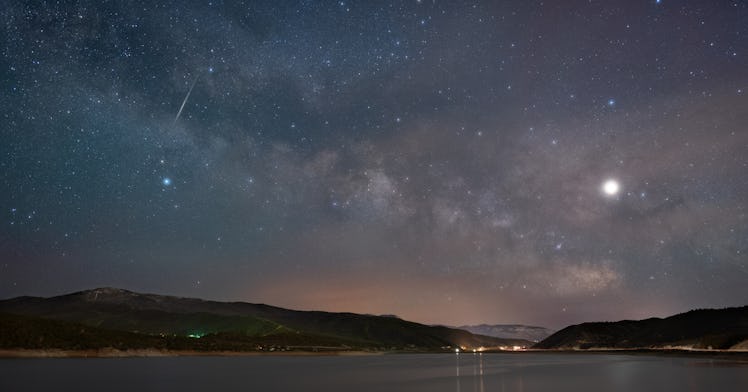May’s Dazzling Meteor Shower Is Reaching Its Peak Soon – Here’s How to Catch It
Grab a blanket and can catch up to 30 meteors per hour!

Looking up into the night sky, it’s hard to conceptualize that the small sparkles are 4.24 light-years away, at a minimum. And that they’re not always just still. Watching meteor showers float through the sky are one of those times we get a glimpse into the world way up there, and the Eta Aquarid meteor shower heading our way in May is going to be a dazzling show.
What is the Eta Aquarid meteor?
The Eta Aquarids is one of two meteor showers that are created by debris from Comet Halley, and it’s named after the Eta Aquarii, the brightest star in the constellation. Comet Halley makes a full run around the Sun every 76 years, with the next being seen from Earth in 2061.
But even though we can’t see the comet, the debris from it is enough to bring a spectacular sky show – including the Eta Aquarids. The shower is quite the show, known for its speed, the meteor is a long stretch of “shooting stars” that can be easily seen in the night sky without using a telescope or other equipment.
When is the Eta Aquarid meteor happening?
The Eta Aquarids meteor shower is one of the longer-running sky events, with this one active between April 19 and May 28. However, according to NASA, the most visible parts of the meteor will happen before dawn on May 5.
“The American Meteor Society is listing 4 UTC on May 5 as the shower’s predicted peak time,” EarthSky reports. “But times vary between different experts. And the peak of this shower stretches out over several days.”
How can I see the Eta Aquarid meteor?
This meteor shower is not the brightest one but relatively easy to see if you’re away from the city lights, which can dampen the view. In general, the meteor shower will show 30 meteors per hour during its peak so there will be plenty of time to catch a few, as long as you have patience.
The best way to view the shower is to lay on your back and look up. “Meteor watching is a lot like fishing,” EarthSky points out. “Sometimes you catch a good number of them, and sometimes you don’t.”
Happy observing!